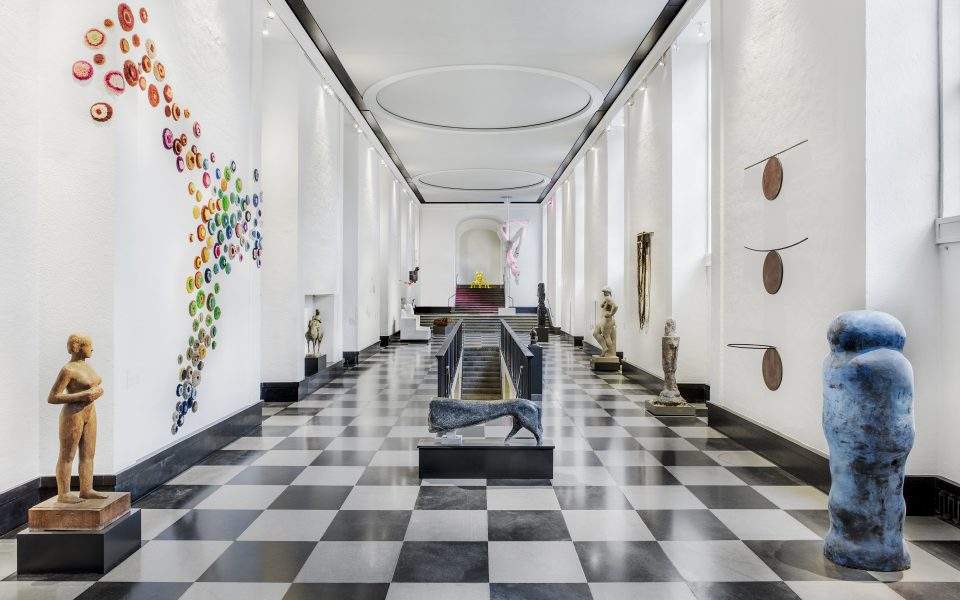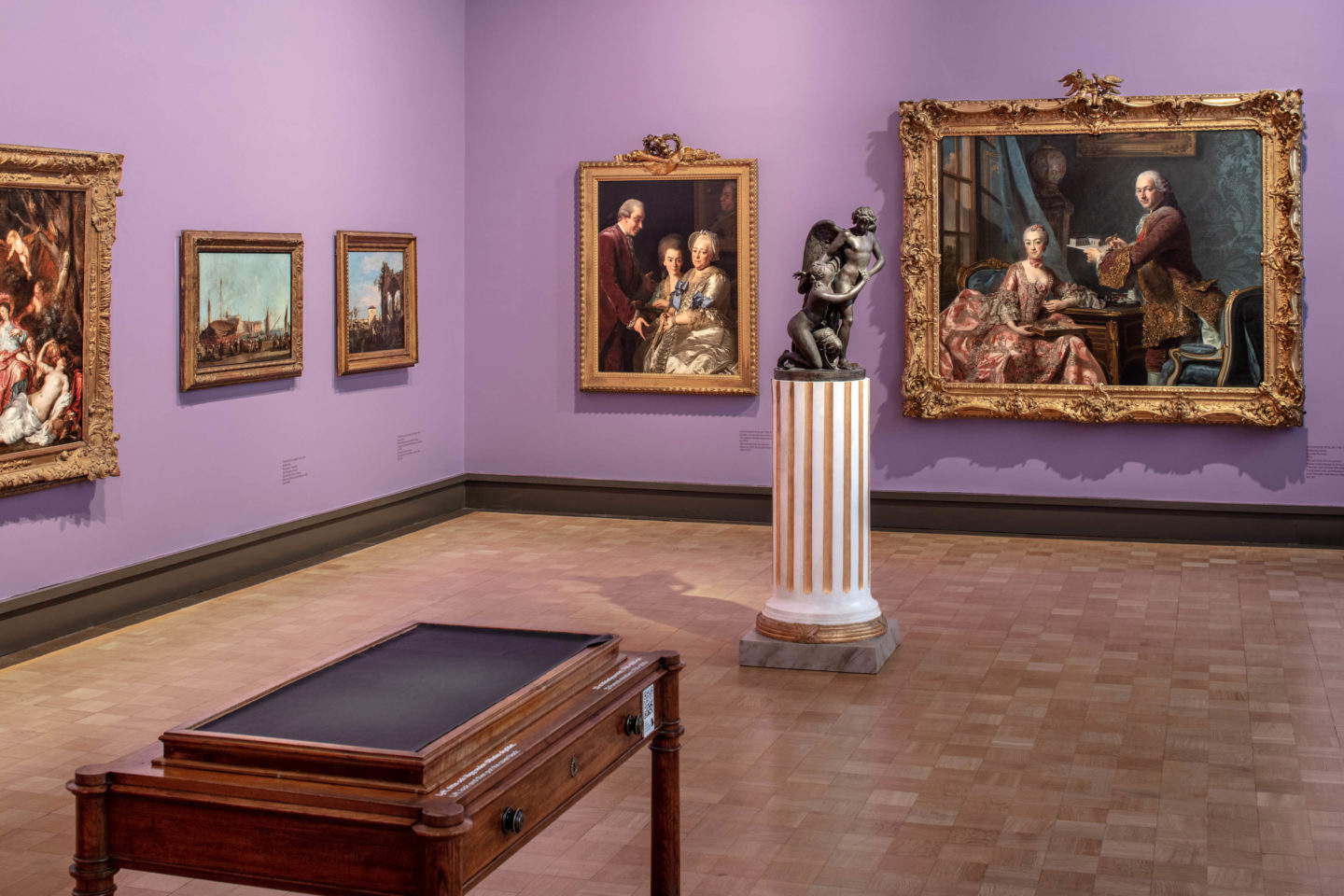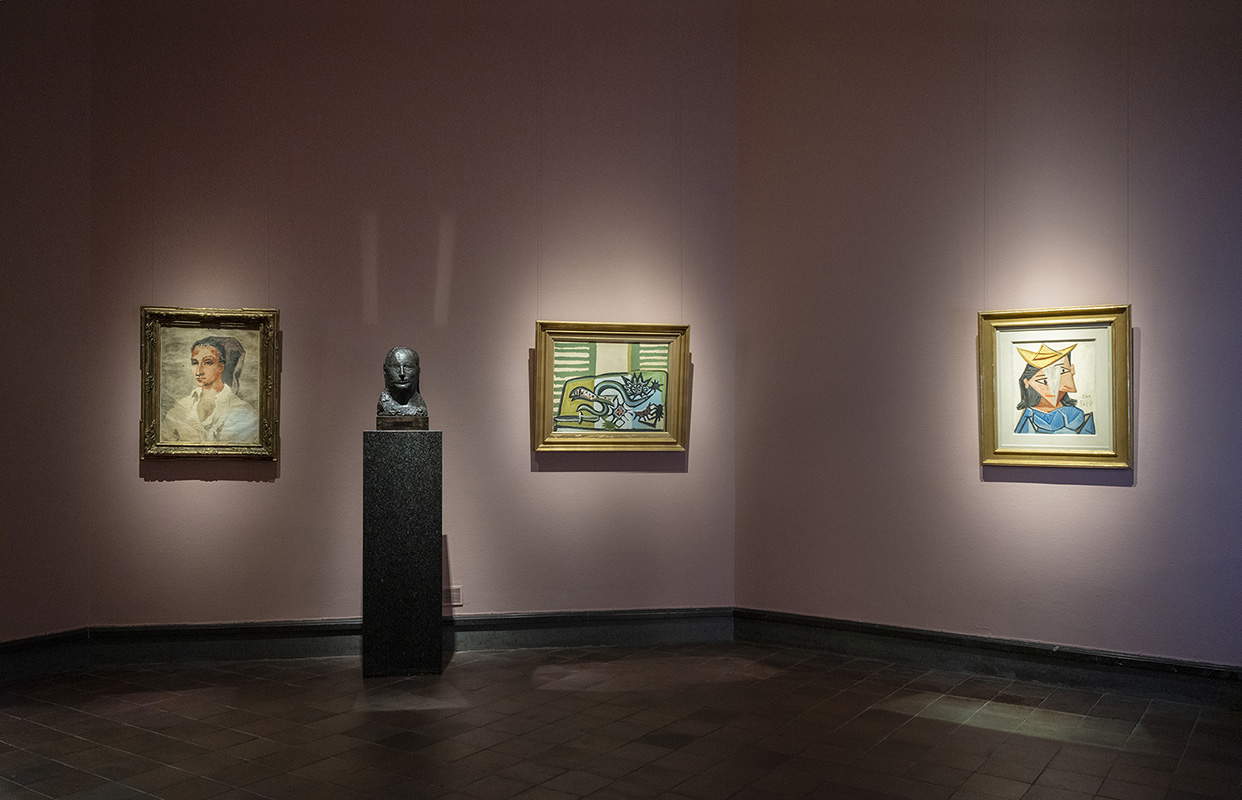It is the third largest museum in Sweden after the Nationalmuseum and Moderna Museet in Stockholm: it is the Göteborgs Konstmuseum, the art museum of the city of Gothenburg, with a collection of 70,000 objects ranging from ancient art to masterpieces by contemporary artists. The present museum results from the merger of several collections that were combined in the 1910s for the very purpose of opening the institute, which opened in 1925 in the building specially designed by architects Arvid Bjerke and Sigfrid Ericson (work had begun in 1921: the building was completed in 1923, and the next two years were used to complete the interior). The museum was later enlarged with new bodies to accommodate the works that were in the meantime becoming part of the institute’s collections: in 1968 the wing with rooms for temporary exhibitions and a section for modern art collections was opened, and in January 1996 a new entrance was built, with a bookshop and restaurant as well. Also in the same year, the iconic gate by Pâl Svensson, one of Sweden’s leading contemporary sculptors, was added.
The direct precursor to the Göteborgs Konstmuseum is the art department that was housed in the Gothenburg City Museum, founded in 1861 to display the city’s natural history, ethnography and art collections. The event by which the city’s art collection is considered to have been officially initiated is the 1865 donation of the Göteborgs Konstförening (Gothenburg Arts Society) collection to the city. Then in 1878 a committee was formed to evaluate the purchases (interestingly, two years earlier, entrepreneur Bengt Dahlgren had left the museum not only several works of art but also a fund of 250 thousand kroner to be used for purchases) and a curator of the collection, landscape painter Berndt Lindholm (Loviisa, 1841 - Gothenburg, 1914), was appointed. By 1916, the collection had already reached such a level of expansion that it required a specially designed building, the one designed by Bjerke and Ericson, which was financed mainly through donations (particularly those of the banker Jonas Kjellberg, who also donated several paintings to the munseo).
The Göteborgs Konstmuseum’s collection covers a period from the fifteenth century to the present, with a focus on the art of the Nordic countries (in particular, the museum boasts a substantial collection of twentieth-century Nordic art): in all, the institution has 4,300 objects including paintings, sculptures, installations, and videos, more than 60,000 graphic works (including watercolors, drawings, and prints), about 900 photographs, and, a rather unique core, a collection of 2,300 illustrations from children’s books. The section of paintings between 1450 and 1750, the one with the oldest works, focuses mostly on Italian and German art of the Middle Ages and Renaissance, and Flemish and Dutch art of the Baroque. Masterpieces include Ludovico Brea’s Madonna Enthroned, Paris Bordon’s Jupiter and Io, two works by Pieter Paul Rubens (TheAdoration of the Magi and Henry IV of France at the Siege of Amiens, two monumental works), and then works by Jacob Jordaens, Francisco de Zurbarán, Lucas Cranach the Younger, David Teniers, Rembrandt, and Antoon van Dyck. One of the museum’s best-known sections is the Fürstenberg Gallery, which documents developments in Nordic art in the 1880s and 1890s: the founders of this nucleus, the collectors Pontus and Göthilda Fürstenberg, were ardent supporters of the so-called "Opponents," a nucleus of young Swedish artists who, influenced by French en plein air painting and the Impressionists, rebelled against traditional academic teachings (that’s where the name comes from) and brought a breath of French air to the northern European countries. They are artists such as Richard Bergh, Peder Severin Krøyer, Carl Larsson, Anders Zorn (just to name the most famous) and several others.
 |
| The sculpture gallery of the Göteborgs Konstmuseum |
 |
| The Fürstenberg Gallery |
 |
| One of the Old Masters rooms |
 |
| The eighteenth-century hall |
 |
| The Picasso Hall |
 |
| Van Gogh’s The Olive Trees at Saint Rémy (1889) |
Speaking of France, the Göteborgs Konstmuseum houses one of the most important collections of French art in Northern Europe, with works from Impressionism to the early twentieth century: there are masterpieces by Claude Monet, Camille Pisarro, Pierre-August Renoir, Alfred Sisley, and then again Paul Cézanne, Paul Gauguin, and Vincent van Gogh (of the latter, see The Olive Trees at Saint Rémy, a work from 1889). And to stay with the 19th century, of great value are the collection nuclei that investigate the Nordic arts of the 19th century: in this case, the most illustrious name is surely that of Edvard Munch. The Göteborgs Konstmuseum is also notable for its Picasso Hall, where several works by Pablo Picasso in the Swedish museum’s possession are exhibited, demonstrating the evolutions of his art from the early 20th century to the 1940s (there is also one of the most important paintings from the pink period: The Family of Acrobats).
On the other hand, to discover sensibilities more distant from those of Southern Europe, one can pay a visit to the Arosenius Room, where works by three artists (Ivar Arosenius, Gerhard Henning, and Ole Kruse) who lived in early 20th-century Gothenburg leading a bohemian life are preserved: they were attracted to symbolism, despised naturalist art, and drew inspiration from medieval art. Their works are among the greatest masterpieces of Swedish symbolism. Or you can see the Swedish Modernism room, one of the institute’s prides: modernism officially arose in Sweden in 1909, when the group afferent to this movement, and which included two of Henri Matisse ’s pupils (Sigrid Hjertén and Isaac Grünewald), organized an exhibition with which it became known by the city. Finally, of great importance is the 18th-century section, which is notable for its many paintings from the Gustavian period, a period of great cultural ferment in Sweden: the public will thus be able to find works by artists little known outside Sweden but who helped to make the country an important center for the development of the arts (from Alexander Roslin to Carl Fredrik von Breda, from Gustaf Lundberg to Per Krafft the Elder). In addition, the collection of eighteenth-century art also includes works by two great Italian artists: the Canaletto and Giacomo Ceruti.
The museum is also constantly engaged in frantic preventive conservation efforts: “Due to repeated exposure,” the museum explains, “works of art come into contact with a number of harmful factors such as intense light, extreme temperatures, incorrect humidity, mishandling or pests. Adapting the indoor environment to an appropriate climate, with regulated light and clean air, is therefore essential to the condition of the artworks and decides whether they can be shown in the future.” To this end, the museum has two conservation and restoration laboratories where diagnostic surveys and analyses are carried out to learn about the state of conservation of the works (also with a view to loans for exhibitions), and where conservation and restoration work is carried out. Each year the Göteborgs Konstmuseum attracts 250,000 visitors: to be next you can start planning your visit from the museum’s official website.
 |
| Göteborgs Konstmuseum, Sweden's third largest museum, between Rubens and Van Gogh |
Warning: the translation into English of the original Italian article was created using automatic tools. We undertake to review all articles, but we do not guarantee the total absence of inaccuracies in the translation due to the program. You can find the original by clicking on the ITA button. If you find any mistake,please contact us.